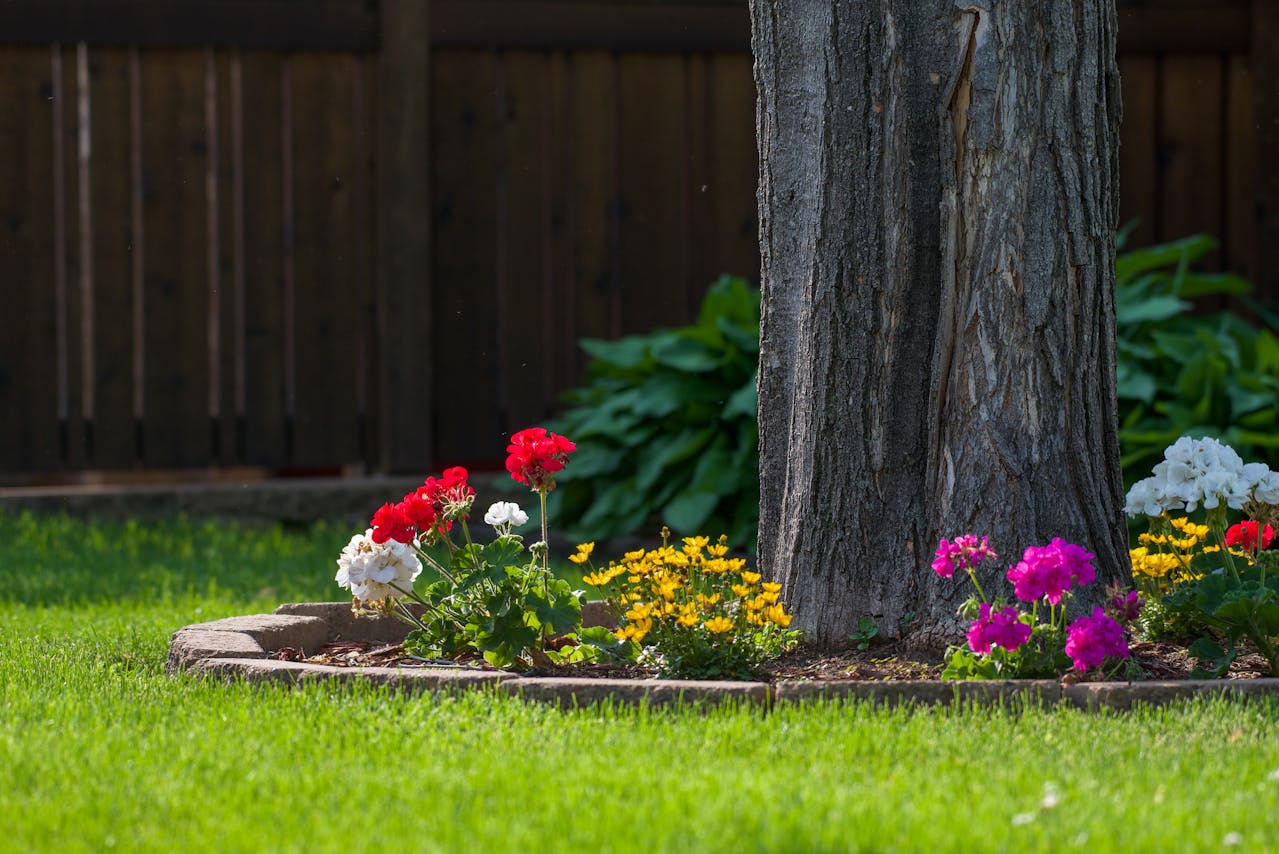Unravel the secrets to maintaining robust tree health with our comprehensive guide. From planting saplings to expert pruning techniques, this guide covers proper tree care, young tree care, arborist tree care, and comprehensive tree care tips. Whether you’re a novice or a seasoned gardener, this resource will equip you with the knowledge needed to nurture thriving trees. Discover the stark contrast between a struggling tree and one flourishing with vitality. Learn how proper care, timely interventions, and attentive maintenance can make all the difference in your tree’s well-being. Dive into our guide and unlock the key to ensuring your trees stand tall and healthy for years to come.
1. Choose The Right Tree
Selecting the right tree species is the first step toward ensuring tree health. Consider the following factors:
A. Climate Compatibility
- Choose tree species that are native or well-adapted to your region’s climate and plant.
- Consider hardiness zones and average rainfall.
B. Soil Type
- Different trees prefer different soil types (e.g., sandy, loamy, clay).
- Conduct a soil test to determine pH and nutrient levels and choose a tree species accordingly.
C. Space And Growth Requirements
- Ensure the chosen tree has enough space to grow both above and below ground and plant.
- Consider the mature height and spread of the tree.
D. Purpose
- Determine the primary purpose of the tree: shade, fruit, ornamental, or windbreak.
2. Planting Trees Correctly
Proper planting techniques are crucial for establishing healthy trees. Follow these steps for successful tree planting:
A. Timing
- The best time to plant trees is during the dormant season—late fall or early spring—when conditions are cool and roots can be established before the growing season.
B. Site Preparation
- Clear the planting area of grass and weeds.
- Dig a hole that is 2-3 times the width of the root ball but not deeper than the root ball’s height.
C. Planting Process
- Place the tree in the hole, ensuring the root collar (where the roots meet the trunk) is level with the ground.
- Backfill with native soil, gently tamping down to eliminate air pockets.
- Water thoroughly to settle the soil around the roots.
D. Mulching
- Apply a 2-4 inch layer of mulch around the base, keeping it away from the trunk.
- Mulch helps retain moisture, regulate soil temperature, and suppress weeds.
3. Watering Practices
Proper watering is essential for tree health, particularly during the first few years after planting:
A. Newly Planted Trees
- Water deeply and regularly to establish strong roots.
- Water weekly during dry periods, ensuring the soil remains moist but not waterlogged.
B. Established Trees
- Deep waterings encourage roots to grow deep into the soil.
- Water less frequently but thoroughly, focusing on the root zone.
- Adjust watering based on weather conditions and soil moisture levels.
4. Fertilization
Trees require nutrients for optimal growth. Fertilization helps provide these nutrients:
A. Soil Testing
- Conduct a soil test to determine nutrient deficiencies before fertilizing.
- Follow recommendations based on the soil test results.
B. Choosing The Right Fertilizer
- Use a balanced, slow-release fertilizer with essential nutrients (nitrogen, phosphorus, potassium).
- Organic fertilizers (compost, manure) improve soil structure and provide nutrients.
C. Application
- Apply fertilizer in early spring or late fall.
- Spread it evenly around the root zone, avoiding direct contact with the trunk.
5. Pruning Techniques
Pruning is essential for maintaining tree health, structure, and aesthetics. Proper pruning techniques help remove dead or diseased branches, improve air circulation, and shape the tree:
A. Pruning Tools
- Use clean, sharp tools to make precise cuts.
- Pruning shears for small branches, loppers for medium-sized branches, and a pruning saw for larger branches.
B. Pruning Methods
- Thinning: Remove entire branches to improve light penetration and air circulation.
- Raising: Remove lower branches to raise the canopy for clearance.
- Reduction: Shorten branches to reduce the overall size or shape of the tree.
C. Making Proper Cuts
- Cut just outside the branch collar (the swollen area where the branch meets the trunk).
- Avoid leaving stubs or cutting too close to the trunk.
D. Addressing Common Issues
- Deadwood Removal: Regularly remove dead, damaged, or diseased branches.
- Crossing Branches: Remove branches that rub or cross each other to prevent damage.
- Suckers And Water Sprouts: Remove these fast-growing shoots that drain energy from the main tree.

6. Advanced Tree Care Techniques
For serious tree health issues, advanced care techniques may be necessary:
A. Soil Injection And Drenching
- Deliver nutrients and treatments directly to the root zone for efficient absorption.
B. Tree Bracing And Cabling
- Provide structural support to weakened or split trees, preventing further damage.
C. Root Collar Excavation
- Remove excess soil and mulch around the base of the tree to expose the root flare and prevent girdling roots.
D. Air Spading
- Use compressed air to remove soil around the roots, improving aeration and alleviating soil compaction.
7. Consult Professionals
- For complex tree health issues, it’s best to consult with professionals:
A. Arborists
- Certified arborists can provide expert diagnosis and treatment plans for tree health issues.
B. Tree Health Specialists
- These professionals specialize in tree diseases, pests, and advanced care techniques.
C. Extension Services
- Local extension services offer resources and guidance on tree care and disease management.
8. Long-Term Tree Care And Maintenance
Maintaining tree health is a long-term commitment. Follow these tips for ongoing care:
A. Regular Inspections
- Conduct regular inspections to identify and address issues early.
B. Seasonal Maintenance
- Adjust care practices according to seasonal changes. For example, increase watering during dry spells and apply protective measures during harsh winters.
C. Record Keeping
- Maintain records of treatments, pruning schedules, and any issues observed to track the tree’s health over time.
9. Managing Tree Health Problems
A. Effective Pest Control
Pests can threaten tree health, but integrated pest management is key to minimizing chemical intervention. Beneficial insects, when encouraged, naturally keep pest populations in check. Targeted treatments should only be used as a last resort to safeguard tree health.
B. Disease Management Strategies
To prevent diseases, maintain good sanitation by promptly removing fallen leaves and debris around the tree. When necessary, apply appropriate fungicides or treatments as advised by experts. Rotating tree species in planting areas can also help reduce disease recurrence.
C. Regular Health Checkups
Regular inspections with an ISA-certified arborist are crucial for maintaining tree health. During these checkups, assess the tree’s structure, foliage, and root health. Address any emerging issues promptly to ensure the tree’s long-term vitality.
Final Remarks
You now have a comprehensive understanding of tree health, from planting to pruning and managing potential issues. By following the tips outlined in this guide, you can ensure the well-being of your trees and promote a thriving outdoor environment. Remember, proper care from the beginning is key to maintaining healthy trees for years to come.
Take action today by applying these insights to your tree care routine. Regularly inspect your trees, provide adequate watering and nutrients, and practice correct pruning techniques. Your efforts will not only enhance the beauty of your surroundings but also contribute to a healthier ecosystem. Keep nurturing your trees with the knowledge you’ve gained, and watch them flourish under your attentive care.
Frequently Asked Questions
1. How Crucial Is Proper Tree Planting For Tree Health?
Proper tree planting is essential for tree health as it establishes a strong foundation for growth, ensuring optimal nutrient uptake and structural stability.
2. What Are Some Early Care Practices That Promote Tree Health?
Early care practices like regular watering, mulching, and monitoring for pests and diseases play a vital role in promoting the overall health of trees.
3. What Are Some Effective Pruning Techniques To Maintain Tree Health?
Pruning techniques such as crown cleaning, thinning, and shaping help improve air circulation, sunlight exposure, and overall tree structure, enhancing its health and appearance.
4. How Can One Identify Common Tree Health Issues?
Common signs of tree health issues include wilting leaves, discolored foliage, abnormal growth patterns, pest infestations, and bark damage, which require prompt attention for proper diagnosis and treatment.
5. How Should One Manage Tree Health Problems Effectively?
Managing tree health problems involves timely intervention through measures like targeted pruning, disease control treatments, fertilization adjustments, and consulting with certified arborists for expert guidance.
Transform Your Landscape With JC Tree Service’s Expert Tree Health Care
If tree health issues are impacting your home or business, JC Tree Service is equipped to provide expert solutions. Whether it’s unsightly trees affecting your property’s visual charm or potential hazards posing a safety risk, our specialized team manages it all. We offer comprehensive tree health services, including precise pruning, disease management, and expert landscaping, serving Brentwood, Antioch, and surrounding areas.
We understand the crucial roles of aesthetics and safety in tree care, hence we commit to delivering top-tier services tailored to your needs. Maintaining tree health is vital not only for enhancing your property’s appearance but also for ensuring the safety of your surroundings. Effective tree health care helps prevent disease spread, reduces the risk of falling branches, and promotes a thriving environment. With JC Tree Service, you can be confident that your landscape is in the hands of professionals dedicated to keeping your outdoor spaces both beautiful and safe.
Don’t let tree health issues detract from the beauty and security of your surroundings. Contact JC Tree Service today to explore how our expert tree health care and additional services can transform your property. We offer a free, no-obligation quote to get you started. Experience the impact of professional tree care!
Disclaimer
The materials available on this website are for informational and entertainment purposes only and not to provide legal or professional advice. You should contact your attorney or home improvement specialist to obtain advice concerning any particular issue or problem. You should not act or refrain from acting based on any content included in this site without seeking legal or other professional advice. The information presented on this website may not reflect the most current home improvement developments. No action should be taken in reliance on the information on this website. We disclaim all liability concerning actions taken or not taken based on any or all of the contents of this site to the fullest extent permitted by law.


